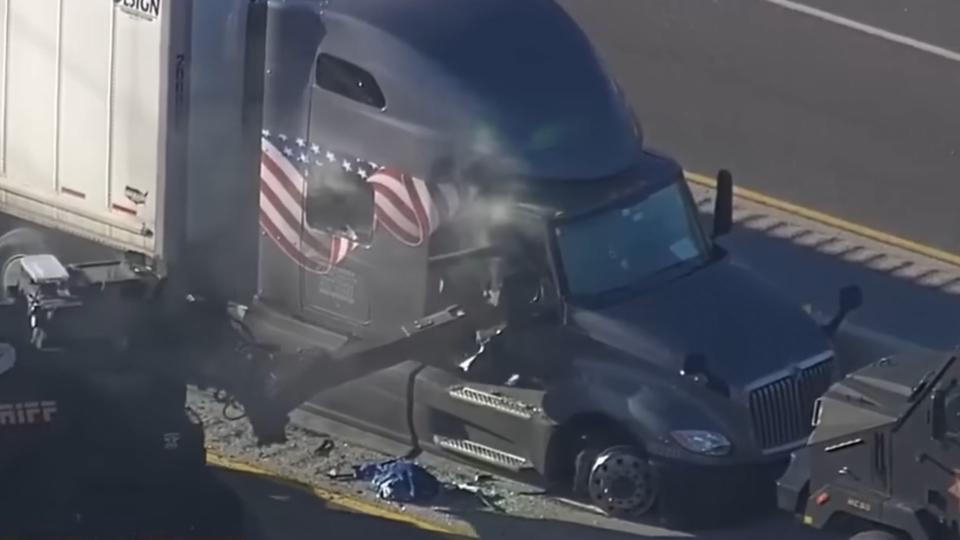Texas Police Chase Ends With SWAT And Semi-Truck Torn Open
Read the full story on Backfire News

In an intense standoff that caught the attention of Houston residents and online viewers, SWAT team members faced off against a suspect in a stolen semi-truck. The incident, which unfolded live, showcased the law enforcement's strategic use of technology and non-lethal force to bring the situation to a resolution.
As the standoff escalated, the SWAT team, understanding the potential risks involved with approaching the stolen vehicle directly, deployed robots to safely assess the situation and attempt to gain access to the truck's door. In an effort to compel the suspect to surrender, officers fired non-lethal rounds into the truck's windshield, yet the vehicle's wheels continued to spin, indicating the suspect's refusal to comply.
In a dramatic turn of events, law enforcement officers used a specialized apparatus to forcefully tear open the passenger side of the semi-truck, a tactic rarely seen in such standoffs. This decisive action allowed officers to access the interior of the vehicle directly.
Viewer discretion was advised as the tense situation unfolded live, capturing the attention of both local residents and online audiences. The standoff came to an end when the suspect was successfully extracted from the torn-open cab of the semi-truck and taken into custody by law enforcement officials.
The use of robots, non-lethal shots, and the physical breaching of the vehicle's side underscore the complexities and dangers faced by SWAT teams in resolving such high-stakes situations. The successful apprehension of the suspect without loss of life highlights the effectiveness of the tactics employed by the SWAT team in managing the standoff.
The incident near Houston serves as a reminder of the challenges law enforcement officers encounter while ensuring public safety and the lengths to which they will go to prevent potentially dangerous outcomes.

 Yahoo Autos
Yahoo Autos 